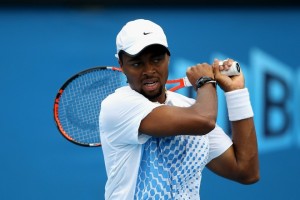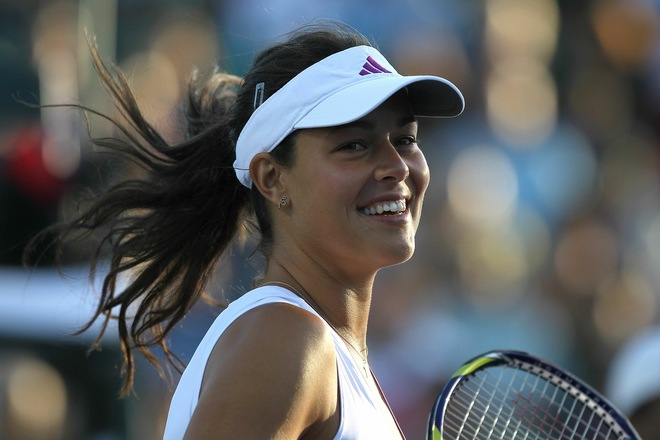Has it really been seven years since IMG galvanized the full force of its public relations machinery in an effort to turn Donald Young into the next great American star?
Where did the time go? More to the point, where has Young gone, except to the depths of the minor leagues and, now, back to another flirtation with the top 100.
He’s 21 now and, after his Australian Open drew to a fast conclusion on Day 2, we’re still not sure how far he’s going to go, though if you had to put money on it, you wouldn’t bet top 50, despite Jim Courier’s claim that he is “without a doubt a top-50 player.”
Courier, the new U.S. Davis Cup captain, had more to say about Young, but it’s all been said before — so often that it begins to sound like faint praise.
“He has so much upside potential. He really is a terrific striker of the ball, but he’s leaving a lot on the table because he hasn’t been in great shape. He also just hasn’t made that jump from a ball-striker to a tennis player,” Courier explained.

It was encouraging to see Young glide through three rounds of qualifying at Melbourne with the loss of only 11 games, but he drew No. 15 Marin Cilic, who reached the Aussie Open semis a year ago, in the opening round and went down 6-3, 6-2, 6-1.
He was overwhelmed by Cilic’s serving and forehand and he seemed perpetually to be playing defense, looping shots back at the big Croatian that left Cilic whatever time he needed to dictate the points.
Would Donald have won a round here had his draw not been so daunting? Cilic is an extremely difficult opener for anyone, but we’ll find out in the weeks ahead just how much staying power Young has this time.
He had spent most of December at the USTA training camp in Carson, Calif., where he apparently got in some hard work.
“I was very heartened to see that he made the commitment to go out to Carson and spend some time training with Mardy Fish and Sam Querrey,” said Courier. And Young got with USTA trainer Rodney Marshall and put in a lot of daily off-court work as well.
“That’s one of the areas where Donald really needs to lift, in the fitness area,” Courier said.
Seven years ago, at age 14, Young was small, naive and under the strict tutelage of his parents. A premie at birth, barely weighing two pounds, he wasn’t muscled, and still isn’t. But he was extremely quick, left-handed and possessed of a surprising variety of shots for one so young.
It was that broad range of shot-making ability that had so many people enamored of his future. But, even with a Wimbledon junior title, he didn’t launch into professional notoriety. He cracked top-100 in 2008, got to No. 79, then fell back. In 2007, at New Haven, just before the U.S. Open, he got his first ATP win and pressed Nikolay Davydenko to three sets before losing. His run continued into the third round at the U.S. Open a week later and he played well at the start of 2008. Things looked promising then.
Yet he’s been just another player out there since. Was there a wear-down factor? Probably. Privately, U.S. tennis executives noted that the best thing Donald’s parents could have done years ago was to turn over his coaching to the USTA staff.
In fact, he did get some help from the USTA, but his parents remained firmly in charge. Maybe that’s what Courier meant when he said, “I’m hopeful he’ll keep the level of commitment he showed by being out there on his own for a couple of weeks (in Carson). If he can keep that up and keep the training and keep pushing forward and take his knocks, he’s without a doubt a top-50 player. It would be a real waste if he didn’t reach that, at a minimum.”
Young will return to the U.S. now that he’s out of the Aussie Open and face more qualifying tournaments to get into ATP main draws. Is he indeed top-50 talent, and maybe more?
He’s got a lot of convincing to do.

